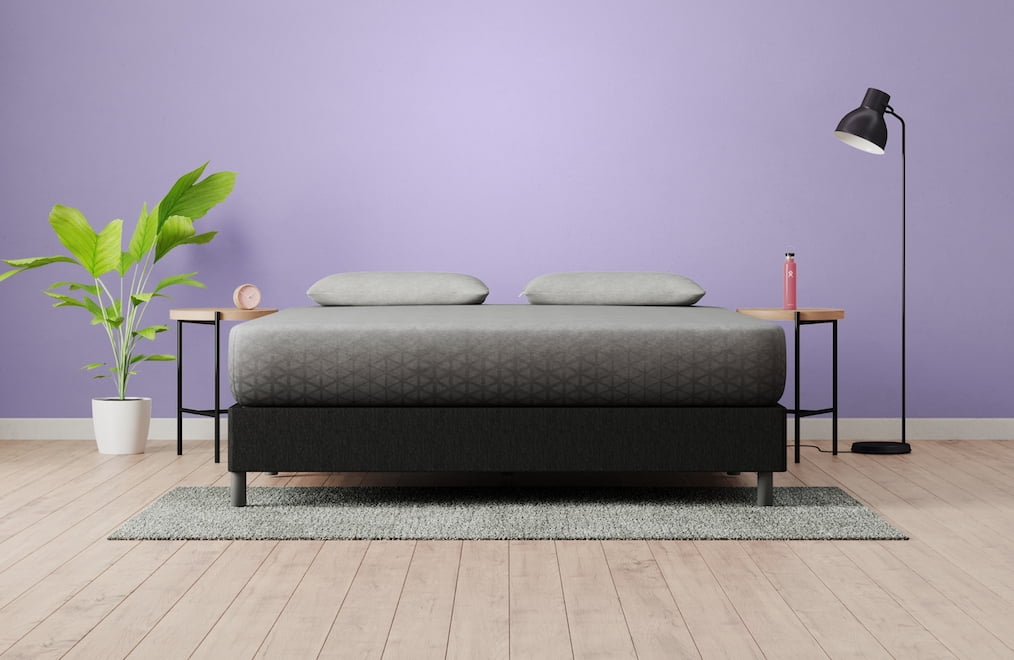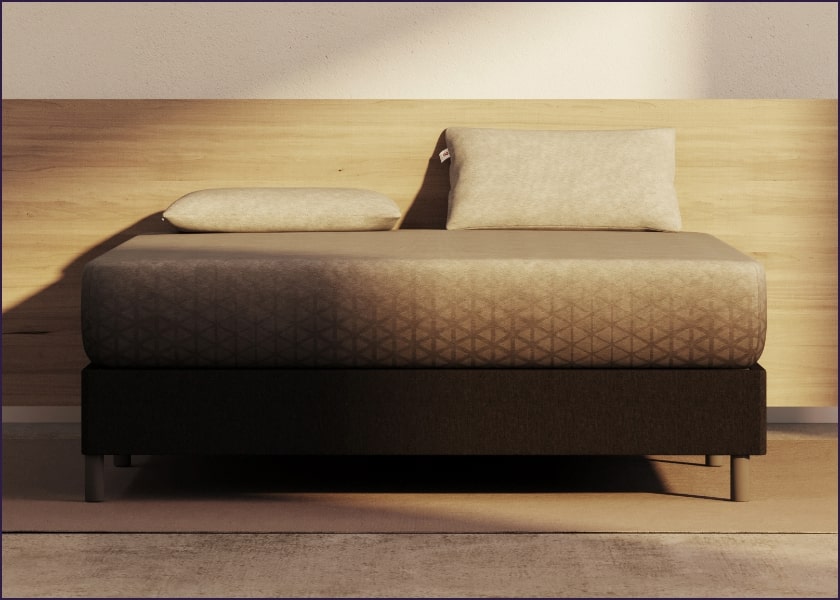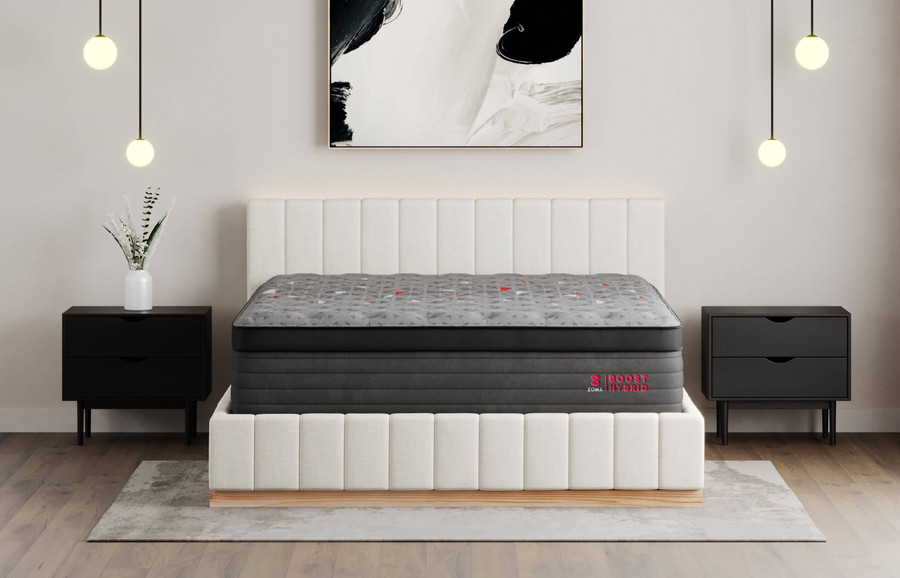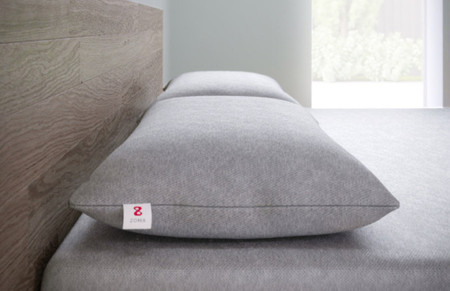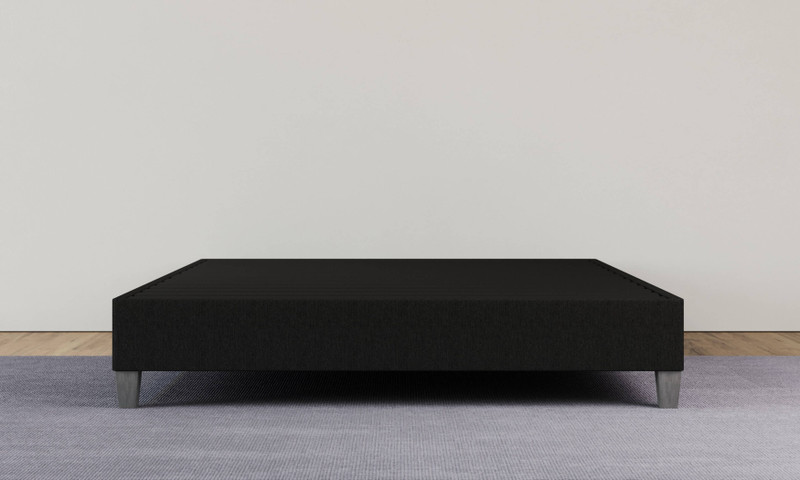
Shop Zoma Memory
Foam Mattresses
Find the right fit for your sleep performance boost.
Zoma Start Hybrid
Our introduction to comfort and support at a price that won’t keep you up at night.
Total Height
10” Profile Height
Comfort
2″ Gel Memory Foam Layer
Transition
2″ Reactiv™ Transition Foam Layer
Support
6″ Zoned Pocketed-Coil Core
Zoma Boost
Premium hybrid mattress made with cooling graphite-infused memory foam for a luxurious sleep experience.
Total Height
15” Profile Height
Comfort
2" Hyper-Cooling Graphite Infused Foam Layer
Transition
2” Reactiv™ Layer
Support
8” Pocketed Coils
1” Foam Base
Cutting-Edge Technology for
Restorative Sleep
Restorative Sleep
How does the Zoma Mattress help you achieve better sleep?
The Construction of a
Zoma Memory Foam Mattress
Zoma Memory Foam Mattress
Most memory foam mattresses contain two or three layers, with a cover encasing the foam layers for protection. All memory foam mattresses need at least two layers of foam—a top layer of memory foam for comfort, and a bottom layer of stiffer foam for support. Extra layers can make the bed more responsive to your movements or add cushion, support, and durability.
Our memory foam beds hasve a three-layer design wrapped up in a soft, breathable mattress cover
Our original Zoma Mattress is 11 inches thick. From top to bottom, the bed contains:
- 2 inches of gel memory foam. The foam has Zoma’s unique Triangulex™ technology with triangular cutouts in the shoulders and legs area. These cutouts improve the bed’s cooling and contouring features.
- The second layer is 2 inches of Reactiv™ foam, a bouncy material that enables the mattress to adapt to your movements quickly. Reactiv™ foam reduces the chances of feeling trapped in bed.
- At the bottom is 7 inches of Support+ foam, a durable material that resists sagging.
The Zoma Mattress has a medium feel that’s well-suited for side and combination sleepers.
IN THE NEWS
"The mattress athletes have always dreamed of"
Need a reference?
We've got plenty.
Frequently asked questions.
What makes Zoma memory foam mattresses special?
The three-layer construction of Zoma’s memory foam mattresses ensures you get the perfect amount of comfort and support to enjoy a more restful night’s sleep. We’ve specifically engineered our mattresses with performance and recovery in mind for individuals with active lifestyles – from athletes to busy professionals and parents that just need better sleep after a long day. Plus, our materials are designed to be extra-cooling, ultra-responsive, and long-lasting, so you’ll get the mattress of your dreams at a great value that’ll help you enjoy a decade of quality sleep.
How much does a Zoma memory foam mattress cost?
Most of Zoma’s memory foam mattresses cost less than $1000, making a Zoma Mattress the perfect choice for people shopping on a budget. Specific prices for each size are:
- Twin size mattress: $399
- Twin XL size mattress: $499
- Full size mattress: $599
- Queen size mattress: $699
- King size mattress: $799
- California king size mattress: $799
- Split king size mattress: $998
Remember that our mattress prices include the physical mattress and our 100-night sleep trial and 10-year warranty.
What is Zoma’s return policy and warranty for its memory foam mattresses?
Every Zoma Mattress includes a risk-free, 100-night trial, which begins on the day that your mattress is delivered. We do require our customers to test their mattress for a minimum of 30 nights. If you decide during your sleep trial that the Zoma Mattress is not the bed for you, we will work with you on the return request and issue a refund. Please note: To ensure optimal adjustment, we ask customers to trial their mattress for at least 30 nights prior to initiating a return. This allows for a thorough experience to truly decide if the mattress is right for you.
Our memory foam mattress warranty guarantees coverage for 10 years, starting the day you purchase your new mattress. We provide protection against faulty workmanship or manufacturing defects. Should your Zoma Mattress develop a visible indentation greater than 1.5 inches that isn’t caused by an unsupportive foundation, we will work with you to issue a full repair or replacement, at no cost to you.
Do you flip memory foam mattresses?
Most memory foam mattresses cannot be flipped because of their construction. The typical memory foam mattress has its support layer on the bottom and the comfort foams on top. Flipping the bed means sleeping on the mattress’s stiff support.
There are dual-sided memory foam mattresses, but many do not have the same feel on each side. Instead, one side feels firm while the other is soft. If you’re used to sleeping on one firmness, you’ll likely feel uncomfortable sleeping on the reverse side.
How many inches thick should a memory foam mattress be?
You should avoid buying a mattress that’s under 10 inches thick. A memory foam mattress thinner than 10 inches offers less durability and support. It is also less likely to contain a transition layer, which can add support, cushion, and responsiveness to a bed.
If you want to pair a new mattress with an adjustable base, the ideal thickness range is 10 to 14 inches. If a mattress is thicker than 14 inches, it may have trouble adapting to the base’s movements, which can keep the bed from feeling comfortable.
What’s the difference between a gel and memory foam mattress?
The main difference between gel memory foam and traditional memory foam is that gel foam dissipates body heat better. Some mattress makers use alternative conductive materials such as copper or graphite to replicate this cooling effect. But gel is one of the safest materials to incorporate for a cooler sleep and a quality gel foam bed has the same conforming feel and durability of a well-made memory foam mattress.
Are memory foam mattresses good for side sleepers?
A memory foam mattress is an excellent choice for a side sleeper. The material conforms well to a side sleeper’s hips and shoulders, which are “problem areas” because they bear the body’s full weight. If that pressure is not relieved, a side sleeper may wake up with sore hips, stiff shoulders, and lower back pain.
Because of its pressure and heat sensitivity, memory foam is one of the best materials for pressure relief. Memory foam mattresses also come in a wide range of firmnesses, including soft, medium-soft, or medium, all of which best suit side sleepers.
What are the disadvantages of memory foam mattresses?
Perhaps the most well-known drawback of a traditional memory foam mattress is its heat retention. The bed would absorb body heat, but the foam’s density would trap the heat instead of allowing it to escape. As the heat built up, the mattress would grow warmer and possibly disturb its occupant’s rest.
Many manufacturers have overcome this design flaw by improving the traditional memory foam formula. The most common solution is to infuse the foam with cooling additives such as gel, charcoal, copper, or graphite. Other producers replace some traditional petrochemicals with plant-based alternatives, creating a more breathable and sustainable foam.
Some owners of a new memory foam mattress complain about a sharp, chemical smell. The scent is temporary, caused by volatile organic compounds (VOCs) leftover from production. When the mattress is unboxed, these VOCs start to break down in a process known as off-gassing. The smell is a byproduct and should vanish within a few days to a week.
How do I choose a memory foam mattress?
The first step in choosing a new bed is to decide what mattress size is right for you. How much space do you and a potential partner need, and what can your bedroom comfortably accommodate? A twin to full size mattress won’t overcrowd a small space, while a queen or king size mattress can complete a master bedroom.
Then you want to consider what mattress firmness suits your sleeping position. Different firmness levels provide different mixes of support and cushion. Side sleepers should consider soft to medium memory foam mattresses for more cushion, while back and stomach sleepers should try a medium-firm to firm memory foam bed for proper support.
Choosing a mattress firmness can be complicated if you share a bed with a partner who has a different sleeping style than you do. You might want to select a medium feel mattress as a compromise or consider a split king mattress that lets each of you have a separate bed.
Once you have a rough idea of what to look for in a memory foam mattress, think about how much you want to spend on a new bed. Keep this budget in mind as you shop for mattresses that meet your criteria.
Finally, we suggest you always choose a mattress with a sleep trial, a warranty, and free shipping and returns.
Are memory foam mattresses good for back pain?
A memory foam mattress is an excellent way to relieve back pain and any other chronic pain condition. Memory foam molds to the body, providing full support and preventing the muscle strain and pressure point build-up that can cause back pain.
Just make sure you choose a memory foam bed with a firmness that suits your sleep position. If you sleep on a too-soft mattress, it can allow your spine to sink out of its neutral alignment. Conversely, lying on a too-firm mattress can raise your spine out of alignment.
Do memory foam mattresses sag?
A memory foam mattress can sag, just like any other type of mattress. It is less likely to sag than an innerspring mattress, which tends to lose its shape as its coils wear out.
While it’s possible for a mattress to sag after many years of use, a memory foam mattress can lose its shape sooner if it’s not adequately supported. A memory foam bed requires consistent support, more than a box spring or a metal rod bed frame provides. Pairing your memory foam mattress with an unsupportive foundation will likely void your warranty.
A good foundation for a memory foam mattress can have a solid or slatted base. If you choose a slatted foundation, make sure that the slats are no more than 3 inches apart and at least 0.5 inches thick. Slats that are farther apart can allow a memory foam mattress to dip between them, compromising the bed’s support.
Complete your setup.
Designed to improve every aspect of your performance-enhancing sleep.




